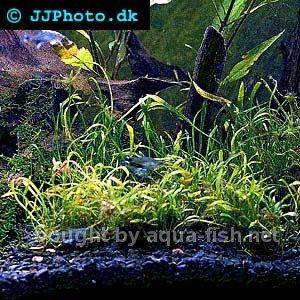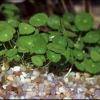Lilaeopsis brasiliensis
Scientific name: Lilaeopsis brasiliensis
Family: Apiaceae
Maximum size reached under cultivation: 0 - 7 cm (0 - 2.76 inch)
014
Recommended pH range: 6.5 - 7.5
Recommended water hardness: 4 - 18°dGH (71.43 - 321.43ppm)
0°C 32°F30°C 86°F
Recommended temperature range: 15 - 24 °C (59 - 75.2°F)
Preferred propagation method: Runners
Native to: South America
Growth rate: Slow
Recommended substrate: Fine gravel
Lighting requirements: Bright
Ideal placement in tank: Foreground
Common Name
Micro Sword, Brazilian Micro Sword
Origin
Lilaeopsis brasiliensis is native to South America, particularly Brazil, where it grows in moist lowland regions, along riverbanks, and in periodically flooded areas.
Propagation
This plant reproduces by sending out runners (also called stolons) that form new plantlets at intervals. Once the young plants develop sufficient roots, the runner can be cut to separate them from the mother plant and transplanted elsewhere in the aquarium. This method allows the formation of dense, grass-like carpets over time.
Difficulty
Lilaeopsis brasiliensis is moderately demanding. It grows slowly and requires specific care to thrive, but once established, it can form a beautiful, low-maintenance carpet in the aquarium.
Short Description
Often chosen for its grass-like appearance, Lilaeopsis brasiliensis is a foreground aquarium plant ideal for creating a natural-looking carpet. It thrives best under bright lighting and benefits greatly from a CO2 system and a nutrient-rich environment. Though initial growth may be slow, consistent care will result in a vibrant green mat that enhances the aesthetics of any planted tank.
It is recommended to plant small clumps at short distances to encourage horizontal spread. Some initial leaf melt may occur after planting, but healthy new shoots typically emerge quickly under the right conditions. A soft, fine-grained substrate is ideal for root development.
Frequently Asked Questions
-
Can Lilaeopsis brasiliensis grow without CO2 injection?
Yes, it can grow without CO2, but its growth will be very slow and the carpet may stay sparse. CO2 injection significantly improves its density and vibrancy.
-
Why is my Micro Sword turning yellow?
Yellowing leaves may indicate a nutrient deficiency—especially nitrogen, potassium, or iron. Ensure you're providing a balanced liquid fertilizer and sufficient lighting.
-
How long does it take to form a full carpet?
With optimal lighting, CO2, and nutrient dosing, it may take 2–3 months to form a full carpet. In low-tech setups, this could take significantly longer or may not happen at all.
-
Can I grow Lilaeopsis brasiliensis emersed?
Yes, it can be grown emersed in high humidity environments, such as paludariums or humid terrariums. It is often used in DSM (dry start method) to establish a carpet before flooding the tank.
-
How deep should I plant it?
Only the roots should be buried in the substrate. Avoid covering the crown (where the leaves emerge), as this can lead to rot.
Tips for Faster Carpet Formation
- Use intense, full-spectrum lighting for 8–10 hours per day.
- Inject CO2 at 20–30 ppm to boost growth.
- Supply root tabs and liquid fertilizers rich in macro and micronutrients.
- Plant small clumps evenly spaced for faster lateral runner spread.
- Maintain stable water parameters and avoid shading from taller plants.
Picture
Bought by aqua-fish.net from jjphoto.dk.

 Hydrocotyle verticillata
Hydrocotyle verticillata